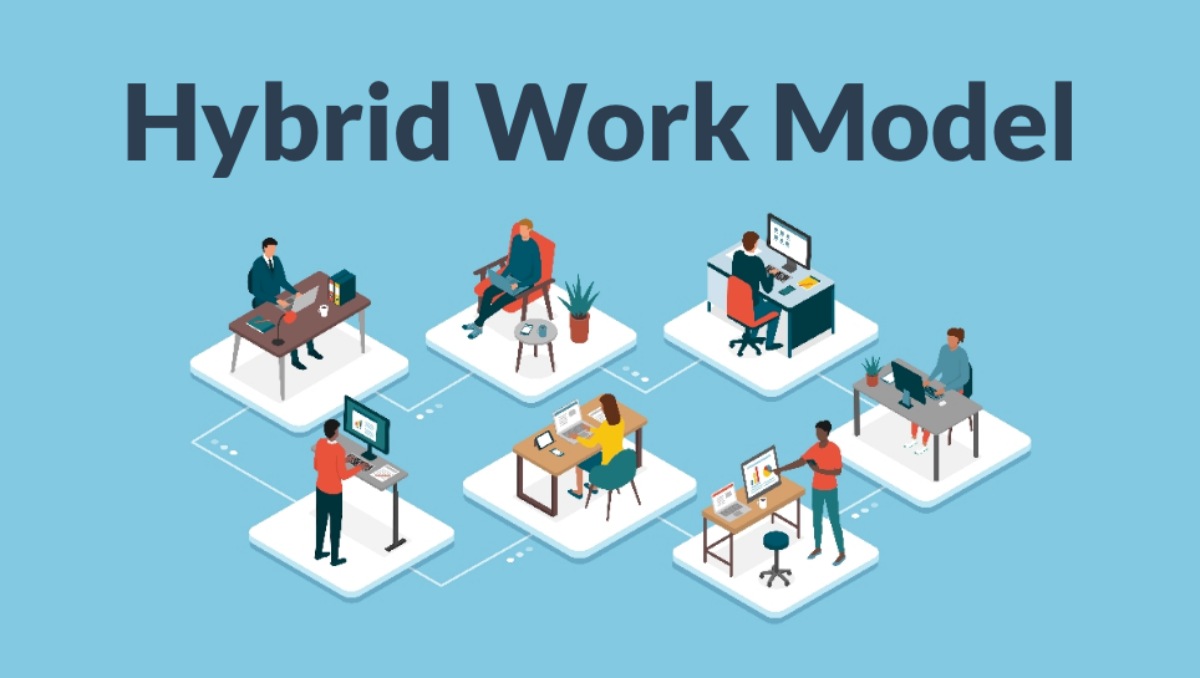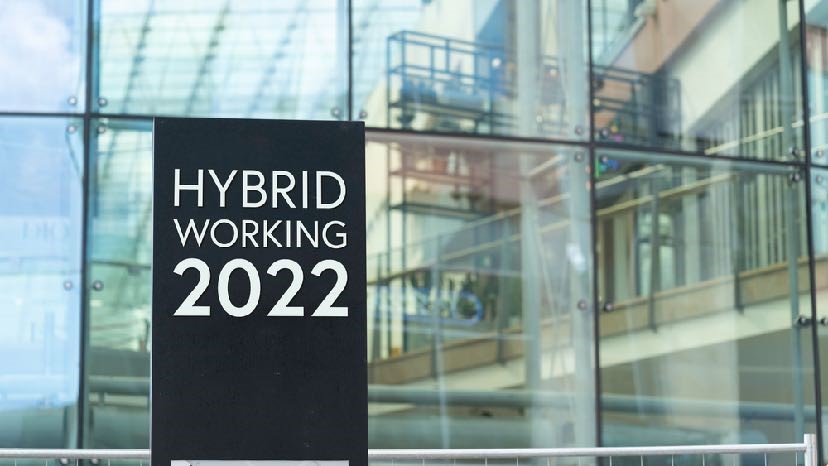What the Hybrid Work Model Will Look Like in 2022

Before 2020, working from home was a bit more of a mysterious and even sought-after model as compared to traditional brick and mortar workplaces. Over the past two years, however, remote work has become a necessary and not fully accepted adaptation to the Covid-19 pandemic, with many companies and workers having had to transition to fully remote work with very little time to prepare.
At the beginning of the pandemic, many had assumed that the sudden lack of full-time office hours would be resumed just as quickly. However, as time has passed, the needs of the community have shifted and remote work has become much more normalized, and even hybrid. Along with the work model becoming much more normalized, so have certain successful coping techniques, from downloading Zoom to and mastering virtual backgrounds to utilizing the positivity that the perfect corporate gifts can project — but where will things go from here?

Table of Contents
The Hybrid Work Model
These days, more and more companies are offering their employees the option to work from home whether it is a necessity or not. This is because for companies, having employees rotate their days in the office or avoid them completely encourages better health and safety protocols during particularly unhealthy and unsafe times. This shift to a hybrid work model has also meant greater cost savings in terms of office equipment, office space and other workplace expenses such as utilities and cleaning.
Over the past 2 years, it has become clear that flexibility in work environments not only benefits employers, but workers as well. Because people have had to transition back and forth between fully online or hybrid work environments so much over the past 2 years, they have not only grown accustomed to working from home, but have started to more fully appreciate and enjoy the flexibility that remote working offers. For employees, the hybrid work model has proven to be very popular as it has allowed more time for personal responsibilities, personal relationships and promoting their own health and wellness. With less commuting time, workers report feeling more rested, more relaxed and more productive, as well.

Hybrid Work in 2022
As we look ahead to 2022, remote and hybrid work is likely to continue, but will become much more sophisticated. Although it was largely born out of necessity, the additional benefits of hybrid work means it will likely continue well into the future. With the Omicron variant emerging and the pandemic still in full force as well, the hybrid work model seems set to continue for some time. With this being the case, you can expect to see a focus on:
-
Maintaining Employee Connections
Although the hybrid work model has been successful, it has also meant that employers don’t get the opportunity to connect in person to their employees as often. This separation can unfortunately create a large disconnect between employees and their company culture. As a way to thank hard working employees for navigating the complex ins and outs of a hybrid work model, many companies are doing their best to ensure their employees feel appreciated and connected by sending small but meaningful items, such as fun desk accessories for their home office. Items and efforts like this can go a long way to help employees feel like they aren’t going unnoticed, brighten up their home office and create a more personalized workspace.
-
Improving Virtual Meetings
As companies get more savvy with virtual technology, online meetings are set to become more efficient, engaging and effective. Workers will be expected to learn how to use advanced video conferencing features that will be extra useful additions to regular meetings, and the disconnected feeling will diminish even more. Beyond the basic Zoom call, tele-conferencing could possibly even begin to include more sophisticated technology such as 3-D simulations, virtual conference rooms or even all-out Augmented or Virtual Reality systems considering the public interest in them. As people get more accustomed to working online, other adaptations and trends are likely to emerge because of it.
-
Incorporating Flexible Scheduling
Employee schedules were created for a reason — but in today’s world, these reasons don’t apply as heavily as they used to! Along with the need being limited now, we’ve come to realize that there are wild variations when it comes to a person’s most productive times, and it only makes sense to allow them the opportunity to take advantage of that! This kind of flexibility around scheduling will be necessary for creating successful work environments and retaining employees when it comes to hybrid work in 2022. Improved technology now allows for asynchronous collaboration, meaning that employees can still work as part of teams, but not necessarily have to work within the same structured hours. This shift will allow remote teams to become more diverse and include colleagues from overseas or in different time zones. Companies can schedule specific meeting times and deadlines to be observed, but leave the rest of a worker’s schedules up to them. Achieving this kind of flexibility offers employees better control over their work weeks and significantly improves personal and job satisfaction.
-
The Pursuit of Personal Engagement
Working from home can feel somewhat isolating and lonely at times. Informal water cooler chats or the opportunity to casually interact with company leaders is a draw for many in the working world. To increase personal engagement and ensure continued strong relationships and team bonds, it will be important for leaders to actively create opportunities for personal connections through initiatives like networking activities and online events with colleagues.

A Shift in Standards
Although the transition to a hybrid work model has been sudden, and one that’s risen out of necessity, the changes that have occurred are creating important discussions around the traditional work model and how it can be adapted to become more efficient, flexible, equitable and sustainable.
As we look ahead into 2022, the hybrid work model is set to become the new standard in almost every field. Whether employees are working from home or from the office, companies are beginning to identify the need to adjust their practices to meet the changing preferences of a workforce that values flexibility, work life balance and a more diverse and accepting culture.

